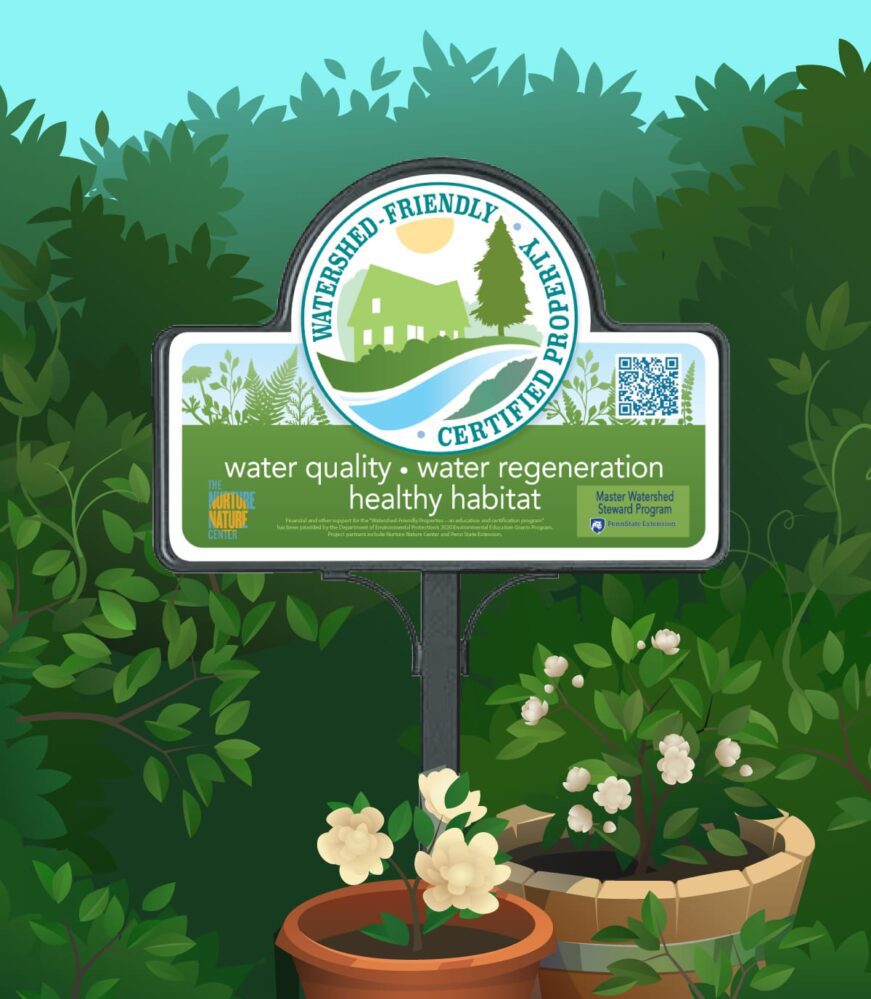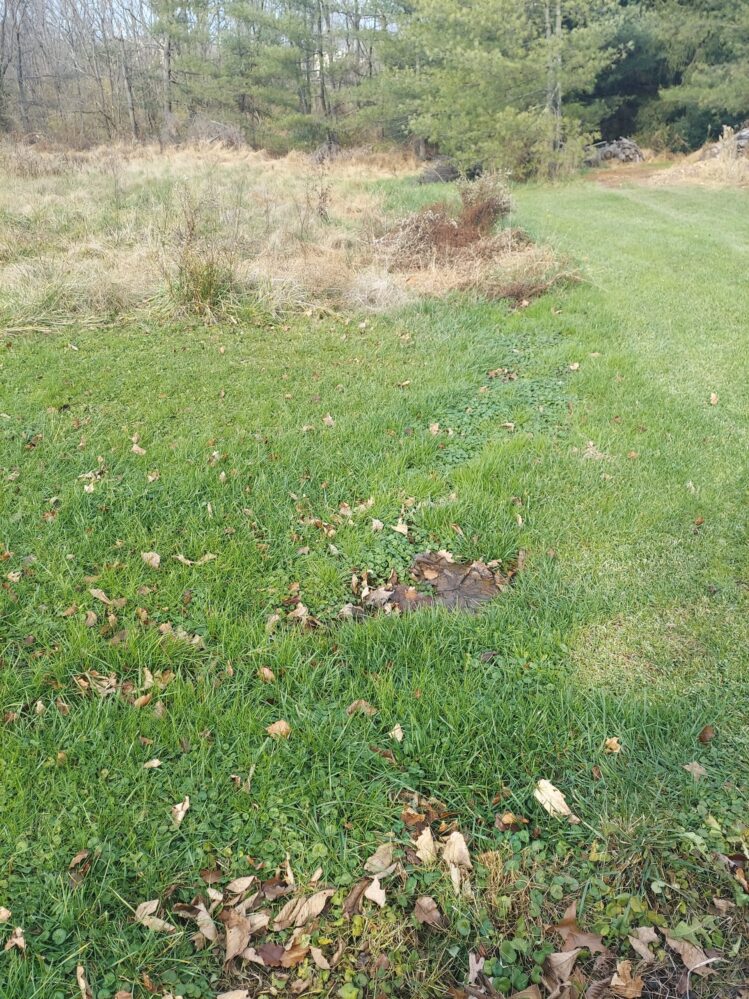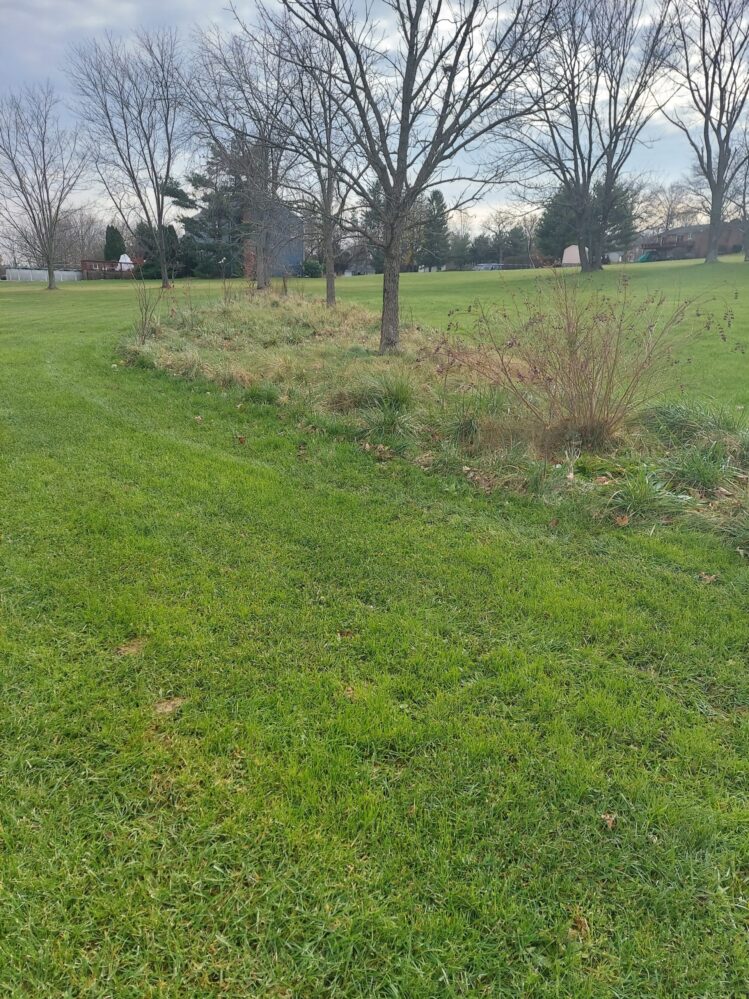 As applications and photos come in for our Watershed-Friendly Property Certification program, it’s clear that people across the state are taking all sorts of actions to protect water quality – installing rain gardens, planting native plants, using rain barrels, and much more. We’ve seen so many good ideas and examples of best practices that we wanted to share some with others who might be looking for suggestions to implement on their own property.
As applications and photos come in for our Watershed-Friendly Property Certification program, it’s clear that people across the state are taking all sorts of actions to protect water quality – installing rain gardens, planting native plants, using rain barrels, and much more. We’ve seen so many good ideas and examples of best practices that we wanted to share some with others who might be looking for suggestions to implement on their own property.
Kevin O’Donnell’s recently certified property demonstrates several stormwater management and watershed protection strategies. “When we purchased [the property], we realized that the soils were very poor, they had not been managed properly, and they were primarily clay soils that retained a lot of the water. We knew that in order to protect our well, we wanted to have maximized recharge. We also wanted to protect our home from water infiltration either through surface or groundwater, so those were our two primary goals,” Kevin says.
In response to those goals, Kevin has utilized a variety of strategies that slow down water as it flows across the property, allowing it to soak into the ground. Much of that water flows from adjacent properties that are uphill from Kevin’s or from the roof of his house, so he has established bioretention areas or swales along the edge of the property and at the output point for the roof drains. In swales or bioretention areas, natural grasses capture and take up water. To address the significant water coming from other properties uphill, Kevin built up the existing slope of the land to direct water into pipes under the driveway that lead to a 250 foot long swale. Similarly, for the water that isn’t funneled into the pipes, Kevin established two infiltration beds where he planted native trees and created a “no-mow” zone. His raised vegetable garden beds serve a similar purpose, slowing the flow of water so it can be absorbed as it reaches the garden. “That’s worked out really well,” says Kevin. “Very often when other people are having to water their gardens, we don’t have to do that.”
In addition to addressing rainwater, Kevin protects water quality in the two small streams that converge on the property by maintaining a 15 to 20 foot wide no-mow area along most of the stream bank. “We leave [those areas] as natural as possible. The only thing we really do there is mechanically, by-hand, remove invasive species, vines and things like that.” This prevents erosion, keeping sediment out of the waterways, and creates habitat for wildlife.
Kevin has seen localized benefits of his efforts as well as protecting water quality within his larger watershed. “I think the biggest thing we’ve seen is that when other people are suffering from drought conditions, the impact on our property is minimized. Our well has never gone dry – a couple of years ago we had a very severe drought here in Montgomery County and some of the other people in our area did have their wells go dry.” The no-mow area around the stream also minimizes damage to the stream bank during times of heavy water flow. “We’ve had no issues with erosion on our bank along those streams. There’s a very dramatic difference between our property and properties downstream,” Kevin says.
Kevin became familiar with many of these ideas during his time as Superintendent of Grounds at Villanova University, where he worked with Dr. Robert Traver, an engineering professor in the Urban Stormwater Management Program. “As part of their research, the students were designing, building, and monitoring different stormwater management techniques similar to what I have here on the property,” Kevin explains. “It was really helpful to see the practical application of those [techniques] on the campus. My goal here was to take that research and utilize it in a way that, as an individual I could maintain it.”
Now hoping to help inform and inspire others to make their properties more watershed-friendly, Kevin discussed wanting “to convey to people that they can incorporate these environmental practices on any property – that it’s possible and practical. Oftentimes it will reduce the amount of maintenance they have to do on their property.” For those who aren’t sure how to get started, Kevin advises people to “look at your property, analyze – what are the water issues for your property?” He also points out that winter is a great time to do this when we get snow, because as it melts you can see the water flowing and melting snow more quickly where flow is heavier.
When you have an idea of where more stormwater management would be helpful on your property, Kevin suggests starting by just expanding existing flower beds – “the first couple years it’s a little bit of extra work ensuring they’re weed-free, but once they’re established it’s very low maintenance, and they act as a sort of bioretention area.” Similarly, areas around trees can be good candidates for creating a no-mow zone that can take up more water than a conventional lawn. “Start with little steps, incorporate one of them, see how it works for you – honestly I’ve modified all [of the techniques on his property]. It’s not a static thing – I look at ways to finetune it over the years,” Kevin says.
Filling out an application for the Watershed-Friendly Property Certification can be a great way of assessing existing conditions on your property and identifying areas where you could start taking small steps to improve. A printable preview of the application questions and resources with more information on water management strategies can be found here. As an added benefit, the first 250 people to qualify for certification and request a yard sign will receive their sign for free thanks to a PA Department of Environmental Protection 2020 Environmental Education Grant. We are all part of a watershed, and by doing our part to protect water in our own backyards, we can act as stewards for this precious resource.
Financial and other support for the “Watershed-Friendly Properties – an education and certification program” has been provided by the Department of Environmental Protection’s 2020 Environmental Education Grants Program. Project partners include Nurture Nature Center and Penn State Extension.



